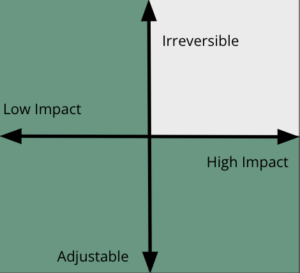Build Capacity and Lead Your Team: How to Delegate Effectively

Have you ever led a team where it felt like you were doing all the work? Like you couldn’t focus on the bigger picture because you were always fighting fires and solving problems for your team?
Or, maybe you have the opposite problem. Maybe you feel out of touch with the projects that your team is working on. Your team feels overwhelmed, but you find it difficult to support them because you are too far removed from the work.
You may think that the problem is team composition or leadership style, but it may be something far simpler: it’s likely that you’re either delegating too little, or too much.
Delegating is a key skill that managers must develop as their company grows to take on new challenges, but it isn’t always easy to know when and how to pass tasks down the chain. It’s a balancing act: too little delegation and you become a bottleneck, too much and you risk losing touch with the work.
In Scaling People – Tactics for Management and Company Building, Claire Hughes Johnson outlines critical skills for knowing when and how to delegate, to ensure effective team and project management.
When to Delegate: The Impact-Outcome Matrix
The Impact-Outcome matrix assesses decisions based on decision reversibility and impact
Work that is irreversible and has a high impact on the organization should almost always be taken on by the manager. Delegating these tasks can place a lot of pressure on team members and, if they fail or make a mistake, then the consequences can be serious and stressful.
The other three quadrants, shaded green above, involve decisions that are reversible with low impact, reversible with high impact, or irreversible with low impact. According to Scaling Companies, a manager should almost never work in these quadrants; instead, these tasks should almost always be delegated.
There are, of course, exceptions to these guidelines. Sometimes, a manager might want to work outside of the high-impact irreversible category to model a standard of work to employees, take care of an urgent last-minute project, or deal with resource constraints.
Modeling a standard of work is a great way to help team members learn; however, if a manager finds themself doing work in the other two quadrants then it might mean they aren’t delegating enough and need to re-evaluate their work style. Finally, if you find yourself with a high-performing team member, then you might have the opportunity to delegate high-impact irreversible work as a learning opportunity. Keep in mind that no matter how much faith you have in their abilities you should still check-in regularly to offer support if they need it.
How to Delegate: A Checklist
1) Plot the Task
Figuring out where the task fits on the “Impact-Outcome Matrix” can help you decide whether or not to delegate.
2) Provide Context
Set expectations for quality and ensure the individual understands the importance of their work. To do this, describe how it fits into the bigger picture of the project, point to similar examples of past work, and emphasize how essential it is.
3) Build Engagement
Do your best to match the project to the interests and skills of the individual. If you know what their career aspirations are, try to assign them tasks that build experience in those areas, so that they feel invested in and identify with the work. Take the time to ask them if they would be interested in this work and consider altering the role or task based on their preferences and feedback.
4) Create a Plan
Set expectations around what the finished product should look like, as well as how long it should take to complete. Make sure the timeline fits with their workload and schedule check-ins at regular intervals to ensure they’re supported in their work. Finally, get them started with a set of initial tasks to tackle as they begin their new project.
By engaging in the delegation process, you will empower the team members you manage and set them up for growth and success. Additionally, you create capacity for yourself to focus on things that only you can do.
SEE ALSO
A strong executive team works at continuous improvement.
See how we facilitate executive and board sessions

